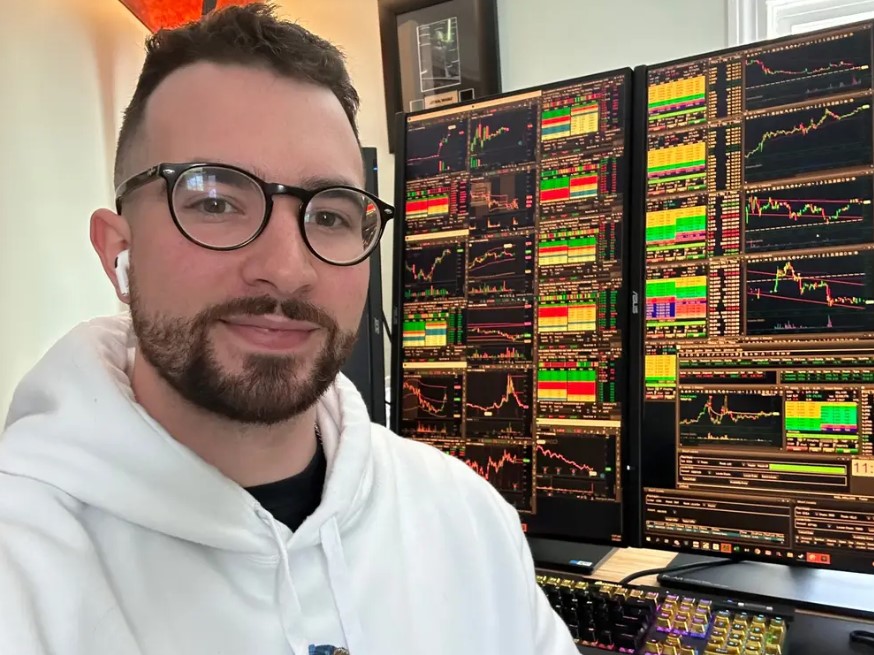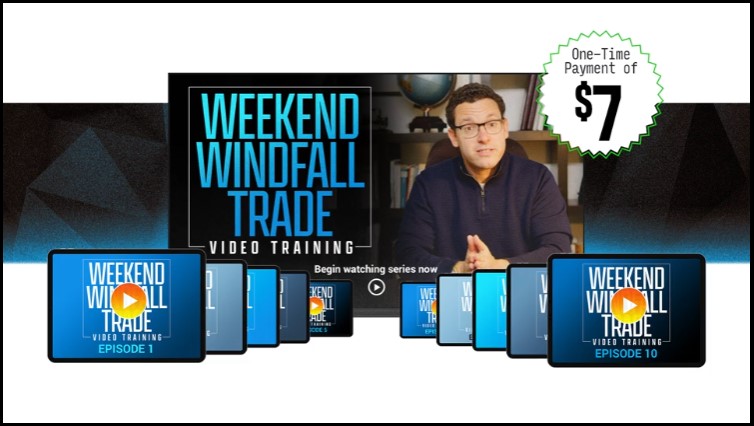
Jack Kellogg is not your typical stock investor.
As a 19-yr-old high school graduate, he made a decision that would create the type of ‘rags-to-riches’ story that almost all Americans would dream of.
Kellogg took the $7,500 in his savings account and turned it into a $8mm portfolio by trading a handful of stocks.
His first trades lost money…
Leading him to realize he didn’t know what he was doing.
It was Kellogg’s next move that would change his life forever…
He applied for an online trading education course. The program, which was created by Timothy Sykes, a trading teacher and former penny-stock trader known for claiming to flip his bar mitzvah cash gift into over $1 million in gains, helped him develop the skills and patience he then used to craft his skill.
By the time the stock market began to rally hard in 2020, Jack Kellogg was ready to ride the upwards wave.
His tax returns showed that he reported over $8 million in gains from day trading in 2020 and 2021. His returns gained momentum in 2020 when he had a total income of $1.6 million. In 2021, that amount grew to a total income of $6.5 million.
All said and done, Jack has made $15 million since joining Timothy Sykes.
Go here now to see if it’s right for you…
His top 4 indicators
The first indicator he uses as a sentiment guide is the volume-weighted average price (VWAP), which shows the average price paid for shares through all trading adjusted for volume. He uses it on the daily chart as a guide to determine a good buy-in price for the stock he’s trading. This keeps him from being a chaser, the term popularly used for those who enter a position too late or after a stock begins to rally.
If the goal is to buy low and sell high, you don’t want to pay more than what the average buyer paid, he noted. Therefore, Kellogg won’t enter a position if the price is above the VWAP line. The opposite is true if he’s shorting a stock: if the price is beneath the VWAP, he generally won’t short the stock.
Oftentimes, he’ll use this indicator to also determine when to exit his position because that point can sometimes indicate where a stock’s price will begin to drop off. The same is also true in reverse: he’ll sometimes use the VWAP to determine the price point where he’ll cover his position. Therefore, if he shorted a stock at $9 and the VWAP is at $7.50, he’ll use that price as a point to lock in profits.
For example, on January 5, he took a short position on ticker AMTD at $2.50. VWAP’s center line was trending at around $2.22. So Kellogg covered his position at $2.25 and made a 10% profit.
The next indicator is linear regression, which shows the direction price is trending and when it may change its direction. They are three lines that overlay the candles. The lower and upper lines are the ranges of price movements or volatility, while the center line indicates the average between the two. Price action above the top line signals an overbought stock, and below the bottom line, an oversold stock.
RELATED: Do You Qualify?
Professional Trader, Timothy Sykes Is Accepting Applications
“So the better a stock is respecting the lines of the channel that’s created, the more predictable I think the stock’s going to be,” Kellogg said. This gives him a better sense that the stock’s price action will trend according to his thesis.
The next indicator is volume which shows the number of shares being traded at any moment in time. Kellogg mainly uses volume as a potential indicator that a stock may reverse.
“Seeing big volume go through, I know that potentially a lot of people are on the wrong side. So if a big volume spike goes through near the high of the day, it’s possible that a lot of people are buying the stock and a lot of people are chasing,” Kellogg said.
Finally, he keeps his eye on the support and resistance lines, the former being where the price tends to hold and the latter where it tends to sell off. The levels change throughout the day. Kellogg tries to find the key levels by looking for a parallel increase in volume in those areas. He also pays attention to how many times and for how long a price level holds to determine how strong that point is. While it’s not an exact science, general areas where the price hoovers for 30 minutes to an hour are the strongest, he said.
“Eventually, you’ll see a bouncing ball-type price action if the stock is going to go lower,” Kellogg said. “So you see it bounce from $7 to $8, then bounce again from $7.30 to $7.50, and then bounce from $7.40 to $7.10, then bounce from $7.20 and eventually cracks the support below $7. And then the question is, is it going to create a resistance level at $7 and continue to head lower?”
At the end of the day, price action is king, Kellogg noted. Even if you have a thesis about why a stock’s price can move in a certain direction, if the price is moving differently, you need to cut losses.
“I don’t ever just base my entire decision off an indicator. So if an indicator isn’t agreeing with the trade thesis, then I simply will cut my losses,” Kellogg said. “So I’ve never ever blamed any of my losses ever on an indicator because I don’t let it get to that point. If the price action is continuing down, then I will cut my losses or if the price action is continuing up, then I’ll cover my short positioning.”
Everyone has access and can view the same data — it’s really about what you do with that data, he said. Where most traders struggle is with the psychology of trading. You can have the best strategy and indicators, but if you don’t have the discipline to stick to it, then you will constantly find yourself in a bad situation. Most people don’t put in enough effort to master their emotions, he said.




